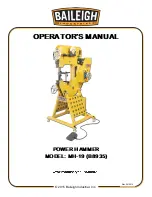
UG:121
Page 21
Current Share Boards – Optional Feature
"Current sharing" also known as load sharing, is the ability to divide the output current evenly across
all active power supplies. This greatly reduces stresses on each power supply and allows them to
run cooler, resulting in higher reliability. Standard "current sharing" techniques typically utilize shunt
resistors or Hall-Effect devices to measure the current from each power supply. Power shunt resistors
continually dissipate power and require cooling especially when dealing with high output currents of
>100A. Hall-Effect devices measure magnetic fields generated by current flowing through a conductor
and although they dissipate no power, they tend to be large and expensive.
First developed by Vicor Engineering for paralleling MegaPAC™ supplies, the box-to-box Current
Share Board or CSB allows two or more Vicor power supplies to current share by utilizing the inherent
voltage drop produced in the negative output return cable. This eliminates the need for additional shunt
resistors or expensive Hall-Effect devices and provides a simple five-wire connection method to achieve
a ±1mV accuracy between the negative output power rails. This accuracy translates to a 1% current
sharing if there is a total of 100mV conductional voltage drop in the negative return path.
Constructed as a current source to drive the trim pin of a Vicor module, the design uses an accurate
comparator circuit to monitor the power returns. In addition, the circuit is unidirectional and can only
trim an output voltage up. The benefit is that only the supply that is supporting less current is adjusted
up. This action balances the currents to the load by matching the output voltages of the supplies. In
the case of one supply failing, the circuit will attempt to trim the failed supply only. This will leave the
remaining functional supply alone to provide power to the load at its nominal voltage. Thus the circuit
also offers simple redundancy. In addition, because CSB functions as a current source, the trim outputs
(T1 and T2) of the CSB can be placed in parallel to create a summing node. This allows current sharing
between more than two supplies by paralleling the T2 output of one CSB circuit with the T1 output
of the next CSB.
Please Note:
The CSB is not intended for use in hot-swap applications.
Figure 12
CSB interconnect example
Supply # 1
5V @ 120A
+OUT
+S
–OUT
–S
TRIM
Supply # 2
5V @ 120A
+OUT
+S
–OUT
–S
TRIM
T1
–V1
T2
–V2
Power
+V
OUT
–V
OUT
D*
D*
CSB02
Black
White
Brown
Yellow
Red





































